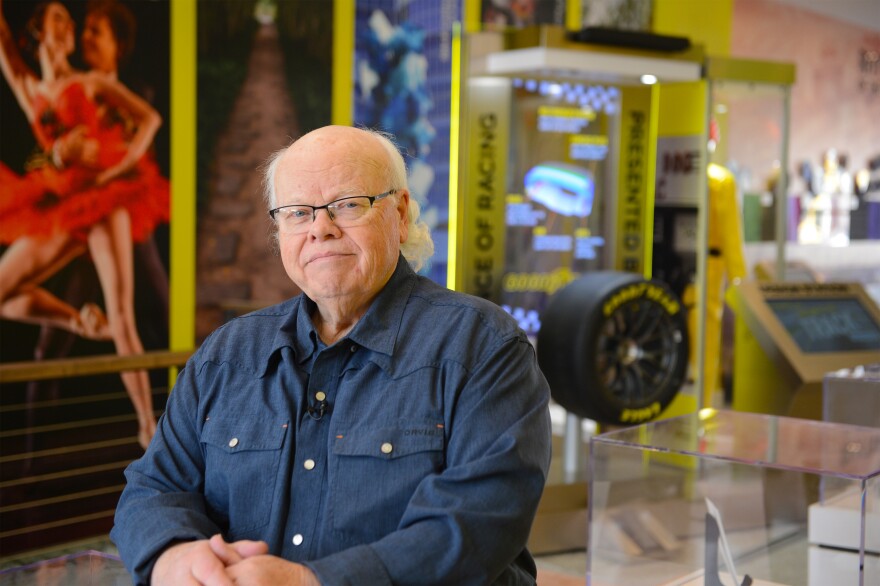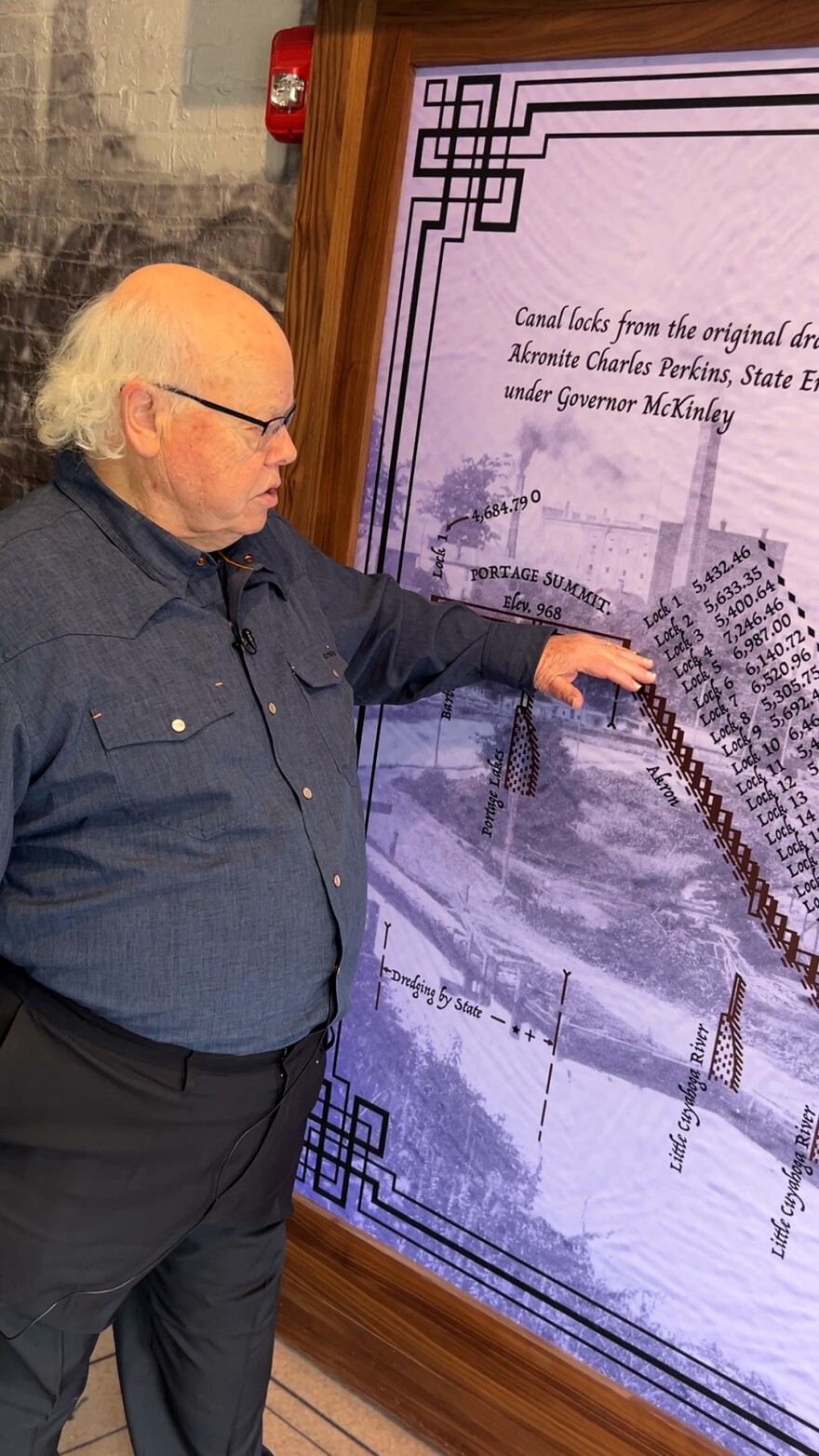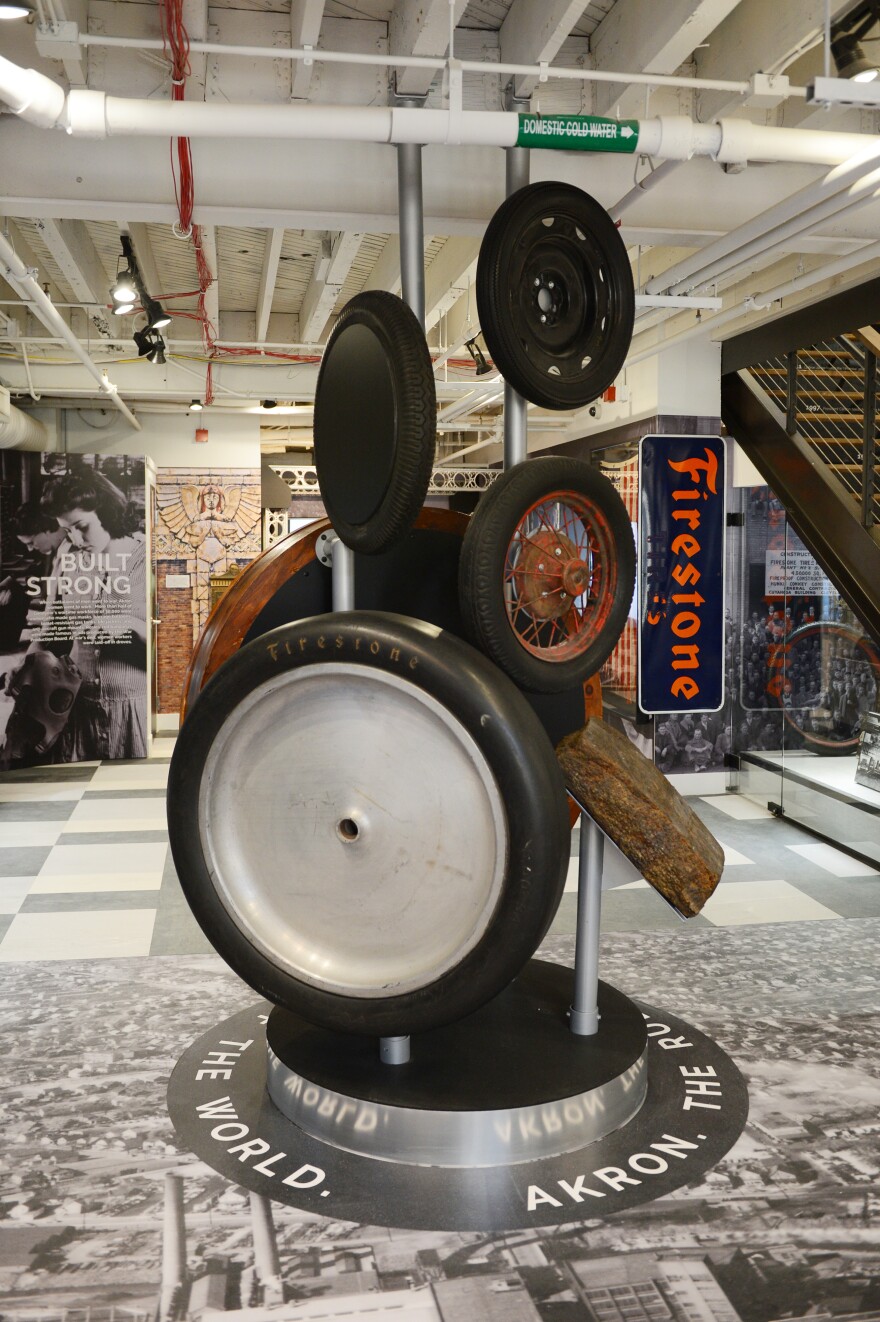A new museum dedicated to Akron’s history opens this weekend.
The Akron History Center is the first of its kind in the city, said David Lieberth, the museum president.
“We realized that there was no one place where all of the history of Akron was told,” Lieberth said. “We have a lot of great historic house museums — Perkins Mansion, John Brown House, Stan Hywet, Hower House — but they are all specialty interests, and so here, we've tried to collect all of the history of Akron.”
The museum has partnered with the Akron-Summit County Public Library and Summit County Historical Society. The library will operate the museum. Both organizations have thousands of historic texts and artifacts in their archives, Lieberth said.
“There isn't anybody who will come here who will not learn something about Akron they never knew before, regardless of how much history they've studied or regardless of how long they've lived here,” he said.

The museum occupies three floors of a building at 172 South Main Street in Downtown Akron. The structure is part of the Bowery project, six historic buildings acquired by the Bowery Development Group in 2016. In addition to the museum, the $42 million project includes 92 apartments, CRAVE restaurant and an engineering firm, according to a news release.
The museum has 62 exhibits and 115 artifacts displayed, Lieberth said. Admission is free.
Three floors, more than 100 artifacts
When visitors enter from the Main Street entrance, they’ll be on the top floor. They can also enter on the ground floor from Lock 4 Park, Lieberth said.
The first floor focuses on Akron’s early history — from prehistoric times to the construction of the Ohio and Erie Canal to the Civil War, Lieberth said.
There’s also a display dedicated to Akron’s founder, Simon Perkins.
“We don't have a lot of artifacts that go back to General Simon Perkins himself, but when he founded Akron 200 years ago, he was an honorary general from the War of 1812,” Lieberth said. “These are his flintlock pistols that he would have used at ceremonial occasions.”
Lieberth pointed to a wall display of the canal system that put Akron on the map.

“[Perkins] knew that Akron could be much greater because of its position on the watershed divide, one of a couple in the country, where the rivers flow both north and south out of Akron,” Lieberth said. “Since each of these locks took about 45 minutes to navigate, it was a day's journey [to travel through the city]. People needed food, they needed beverage, they wanted entertainments of all kinds, and so Akron grew out as a result of that.”
Exhibits also detail Akron's ties to racial and social justice, including the legacy of abolitionist John Brown and Sojourner Truth's famous "Ain't I a Woman?" speech given in Downtown Akron.
The second floor showcases Akron’s contributions to industrialization, particularly rubber manufacturing. Dozens of rubber products, from toys to tires to condoms, are displayed throughout the exhibit.
There’s also a media wall showing a video about Akron’s once-booming tire industry.
“Akron is an unusual city [with] under 200,000 population. We have more firsts, more accomplishments for a city our size than almost any other city of our size in the country,” Lieberth said. “Even today, with the new polymer hub, we are continuing to be a city of great innovation.”
There are more industrial displays on the third floor. Here, visitors can learn about Akron-based GOJO, manufacturer of Purell hand sanitizer, and play with an interactive exhibit showcasing a NASCAR racecar tire made by Goodyear.
Another exhibit shows Akron’s contribution to the music industry, highlighting the “Akron sound” that became prominent in the 1970s.
“That industrial rock era from about 1975 to about 1985, when Devo became the most well-known proponent,” Lieberth said. “We have, in a case here, the chemical suit that Devo wore at one of their California performances, along with a 'Booji Boy' mask. But, it'll certainly be a spot where a lot of people want to stop and visit and remember where they were.”
'An inspiration for young people'
When visitors enter the third floor, they’ll be greeted by several large monitors spotlighting famous individuals from Akron.

“Just recently, we've had a lot of attention given to Paul Tazewell, a Buchtel High School graduate who designed all the costuming for 'Wicked,' both on Broadway and in the movie, and 'Hamilton' on Broadway as well,” Lieberth said. “There are many others who are lesser known. We have a Nobel Prize winner here. We have scientists who have achieved national reputations, largely, not really known widely.”
Lieberth added that more exhibits may be curated in the future. Since the museum was announced, the Summit County Historical Society and Lieberth himself have continued to receive donations from the community.
“Because history is being made in Akron every day, the center is a work in progress,” Summit County Historical Society President and CEO Leianne Neff Heppner said in a press release. “It will continue to change and will commemorate signature events from the city’s past."
The Akron History Center Inc. nonprofit raised $2.2 million to fund the project. The initial investment was a $500,000 grant from the city of Akron, followed by donations from 83 individuals and 27 local companies, officials said in the release.
Lieberth is excited to open the museum amid the city’s ongoing commemoration of its bicentennial, he said. He hopes the history center will ultimately inspire the next generation of Akronites.
“It's a source of community pride to know that all of these things happened here and inspired here, hoping that the Akronites who impacted America will be [an] inspiration for young people,” Lieberth said.
The museum will be open from 1 to 5 p.m. on Saturday, April 5 and from 1 to 4 p.m. on Sunday. In April, it will be open Wednesdays through Saturdays from 10 a.m. to 2 p.m.






